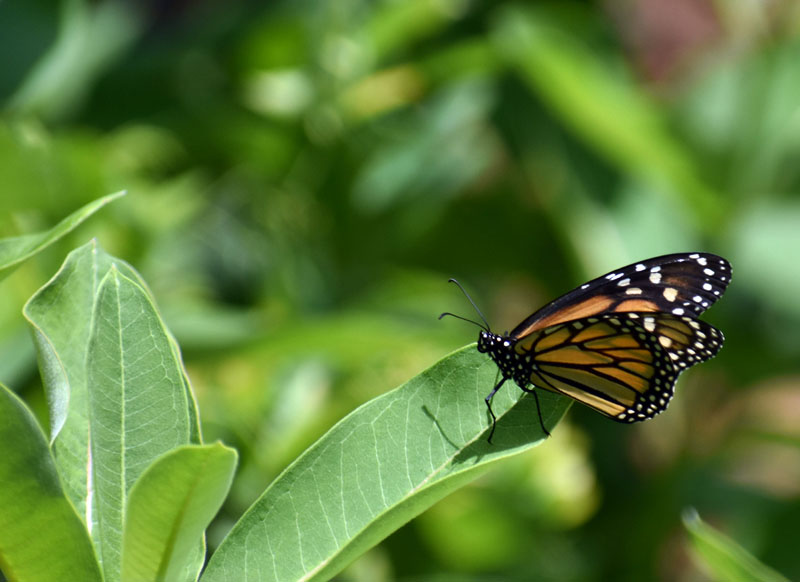
A monarch butterfly on Hog Island in Bremen. (Alexander Violo photo)
During a recent outing to Bremen’s Hog Island, hikers learned about efforts to monitor shell middens along the Maine coast, as well as about the island’s bird habitat and history as an educational nature camp.
The Medomak Valley Land Trust led the July 11 outing to the island, about a quarter-mile off the coast. Hikers had a chance to experience the island’s trails and its diverse variety of plants and wildlife.
The field trip was offered in conjunction with the Friends of Hog Island, the Maine Coast Heritage Trust, and Dr. Alice Kelley, a geoarchaeologist with the University of Maine at Orono.
The outing featured an exploration of two of the island’s middens, where Kelley took measurements and observations. She explained the characteristics of the middens and their uses by Native Americans prior to the European colonization of Maine.
Shell middens are refuse heaps, piles of domestic waste that include clam, mussel, and oyster shells, as well as bones and artifacts. Middens can be found throughout the coast of Maine, according to Kelley.
“It’s one of the only ways to know what was happening in the western Gulf of Maine before Europeans arrived,” Kelley said.
Kelley said that throughout the summer months, the University of Maine is working with local groups, including conservation organizations, to develop monitoring plans and training sessions to track erosion at some of the state’s 2,000 shell middens. The middens, close to the shore, are vulnerable to sea level rise.
“We are trying to build up a citizen science network (to) find out what is happening to these middens and where we should focus attention,” Kelley said.
The field trip began around 10 a.m., when Friends of Hog Island President Juanita Roushdy ferried visitors across Muscongus Bay to the island’s Audubon camp. The hiking continued until about 2 p.m., when visitors were transported back to the mainland.
Upon arriving on the island, Roushdy gave visitors a brief history of its 80 years as an education camp for adults, families, and teens, and discussed the ornithological importance of the camp.
A hot spot for birding, the island is home to a nesting pair of ospreys, Rachel and Steve, with their own webcam.
According to Roushdy, Friends of Hog Island partners with the National Audubon Society to run 12-13 camp sessions a year.
The hike consisted of a 3-mile trek along the ocean-facing side of the island, through riparian areas, fields, and rocky beaches with sun-splashed views of Muscongus Bay and the outlying barrier islands.



